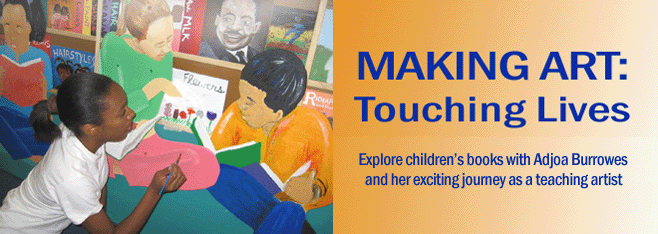In early January about a dozen middle school girls from the Community Bridges-Dream Catchers mentoring program converged on Pyramid Atlantic—a respected print and paper arts institution in Silver Spring MD, to make handmade paper that would be used in their one-of-a kind, artists’ books.
I met the girls late last year during orientation for the month long program called YES (The Youth Empowerment and Skills program) which is a unique collaboration between Pyramid, Dream Catchers, Maryland Department of Juvenile Services and the Montgomery County Department of Recreation. The program would include papermaking, collage, storytelling and job training skills workshops.
Pyramid’s Resident Papermaker, Gretchen Schermerhorn, and artist Beth Schaible introduced the art of papermaking and provided direction as the girls sloshed through water at their feet and sticky pulp in their hands. I assisted as they formed their sheets, mixed pulp paint, and made their color choices. Dream Catchers program coordinator, Jenna Fletcher, worked with a group of girls in another room on job skills.
In the papermaking studio were vats of pulp made from blue jeans mixed in a huge Hollander beater and other vats with pulp made from cotton fibers and another containing rich purple pulp.
To form a sheet of small paper, the girls had to grip the mold and deckle and pull it through the water, with the bottom end first. It then required them to lift both to the surface in one continuous motion.
Each girl made many small sheets of paper that would be used to create collages as well as cut-out images for their books. I will demonstrate the collage technique in an upcoming workshop. The girls laughed and sometimes winched when they immersed their hands into the cold mushy solution to break up clumped fibers. Some experimented and added inclusions like yarn or leaves to their sheets.
Every girl created one deckled sheet over five feet long. The tedious process began by measuring the pulp taken from large vats and mixing it with a small amount of a slime-like substance. The solution was then stirred and carefully poured into a long wooden frame, while someone else shook the frame from side to side to avoid clumps from forming. After the water drained from the sheet, it was then flipped onto a couching table and then painted with colored pulp squeezed from plastic bottles. After drying for a day or so, the long sheet would then be folded into an accordion book. Other elements will be added to the book in future workshops.
The girls created beautiful paper that day and were anxious to see what it would finally look like after it was pressed and dried. I was thrilled that they had this amazing experience and excited about leading the next workshop where I will teach the girls a paper decorating technique called paste paper.
Posted in February, 2008
